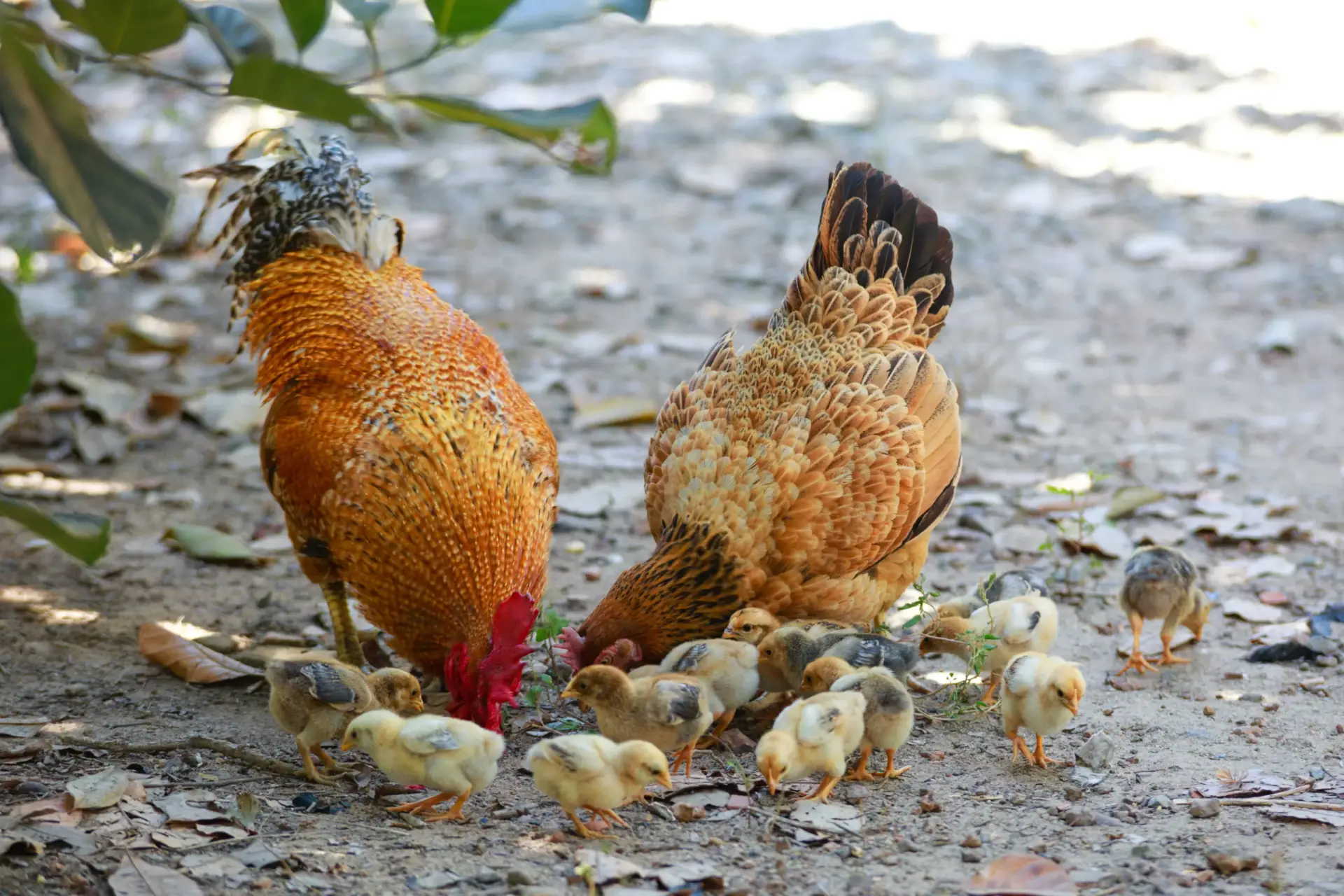
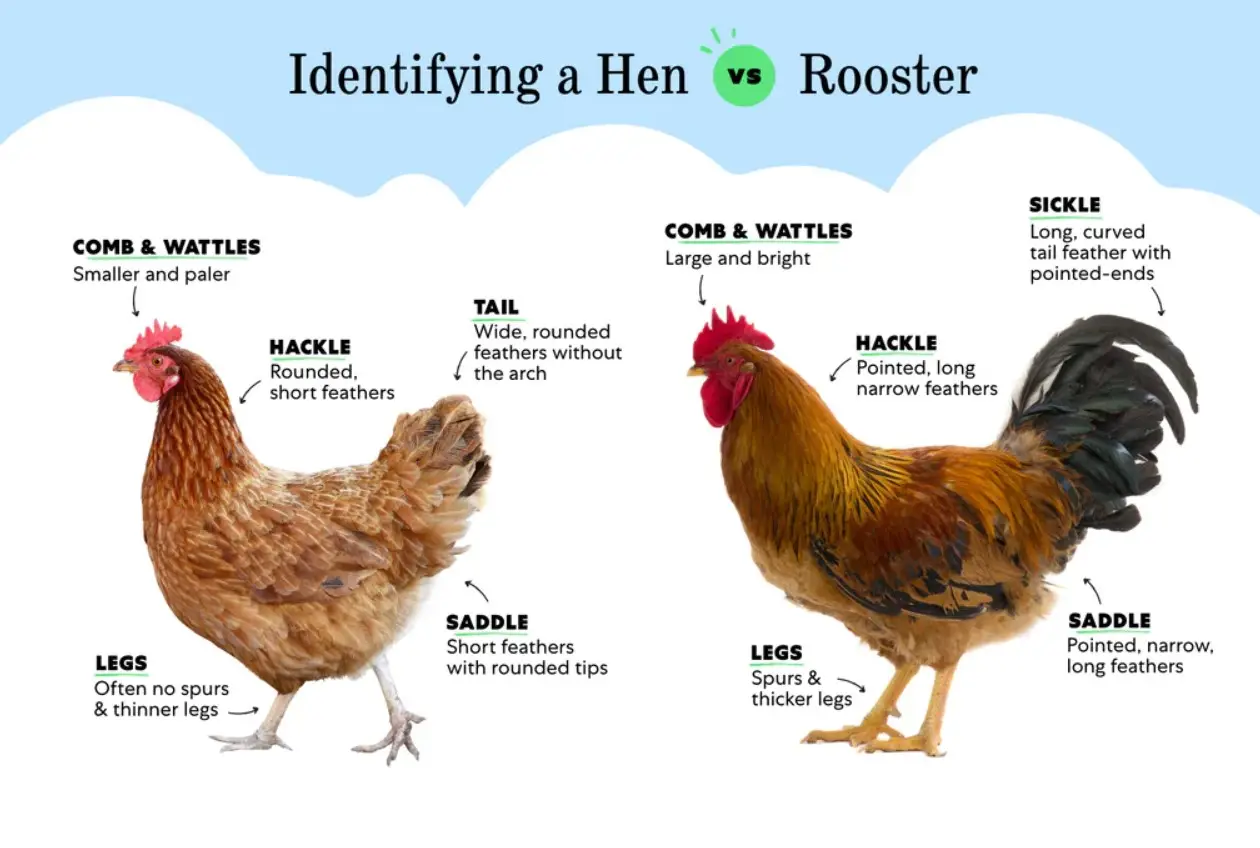
Image Source: Grubbly Farms
If you’ve found your way here, you’re likely in that common situation of scratching your head and wondering, “Is my chicken a hen or a rooster?” It’s a curious challenge for backyard poultry enthusiasts, especially when your feathered friends are still too young to lay eggs. Fear not, for we’ve got some quick tips to help you decode the gender of your chickens before they reach egg-laying age.
1. Egg Laying:
The most straightforward way to tell is, of course, through egg-laying. Hens typically start laying eggs at around six months of age. However, until they reach that milestone, we need to rely on some other telltale signs.
2. Combs and Wattles:
Both hens and roosters sport combs and wattles, but as roosters mature, these features become larger, brighter, and more pronounced. Roosters also tend to have larger wattles, those fleshy skin flaps beneath the beak.
3. Feathers:
Keep an eye on feather patterns. Check the neck feathers, called hackle feathers. On hens, they tend to be rounder and shorter, while on roosters, they grow longer and pointier. Tail feathers also differ, with roosters often having pointier, longer, and more colorful ones.
4. Saddle Feathers:
Pay attention to saddle feathers, found on the back near the tail. Young roosters (cockerels) will develop long and pointed saddle feathers, while pullets (young hens) will have more rounded ones.
5. Behavior:
Chicken behavior can be revealing. Roosters tend to be more assertive and even bossy, often displaying these traits from a young age. As they grow, they may challenge each other, puffing up their hackle feathers, and eventually, they’ll serenade you with that unmistakable morning “cock-a-doodle-do!”
6. Leg Size:
If you inspect their legs, you’ll notice that male chickens typically have thicker legs than their female counterparts. In some breeds, roosters develop pointed spurs on their legs just above their toes, which can grow longer as they age.
While these tips can be quite helpful, remember that individual chickens and breeds can exhibit variations in these characteristics. So, if you’re puzzled by chicken gender, take your time, observe closely, and have patience. The mysteries of your feathered friends will unravel as they mature into confident egg layers or proud crowing roosters!
Share:
Valley Hatchery
Blog Categories
Social Media
Most Popular

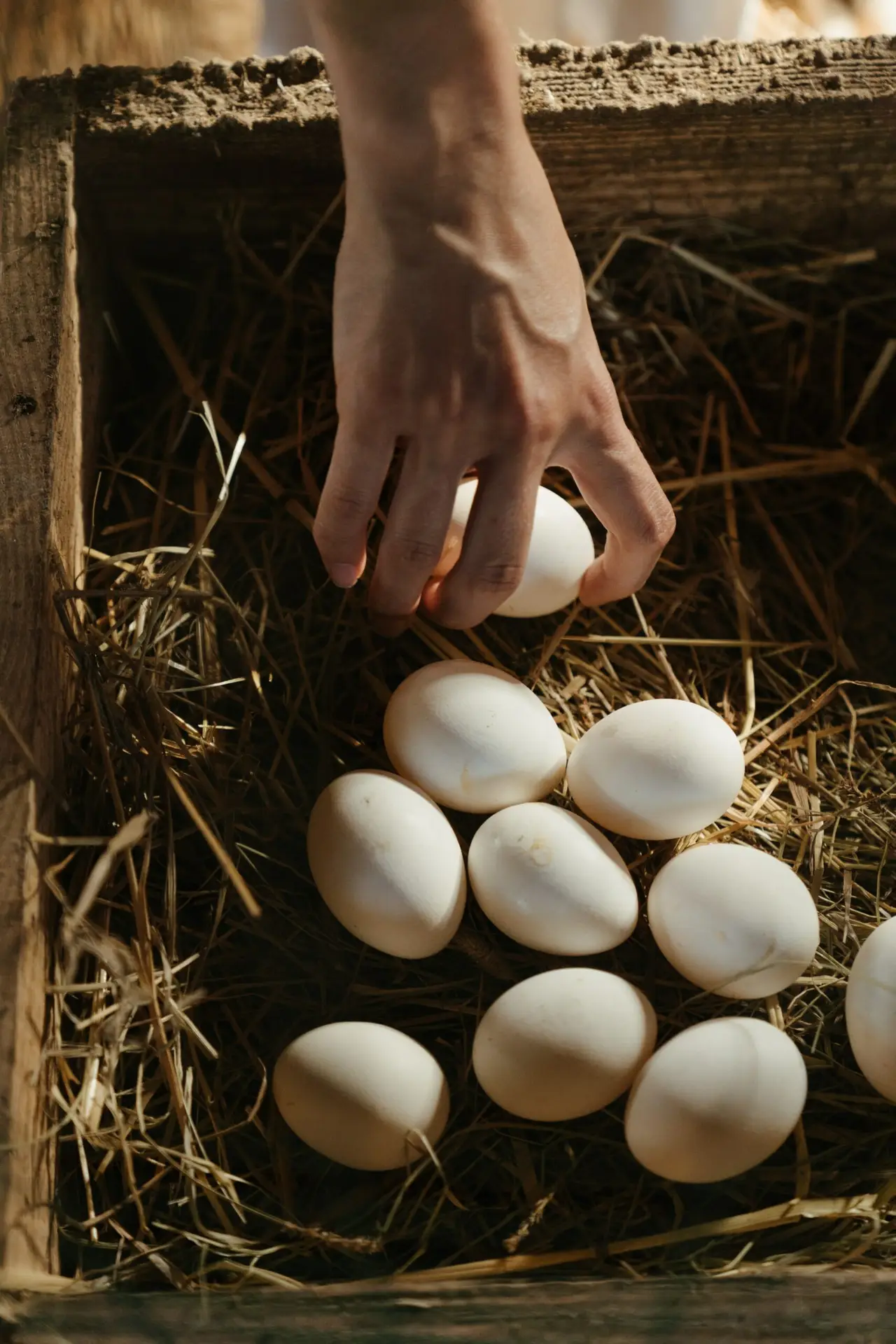
Quick Tips: Addressing Egg Laying Concerns
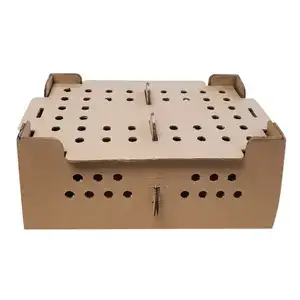
Tips for Chick Season
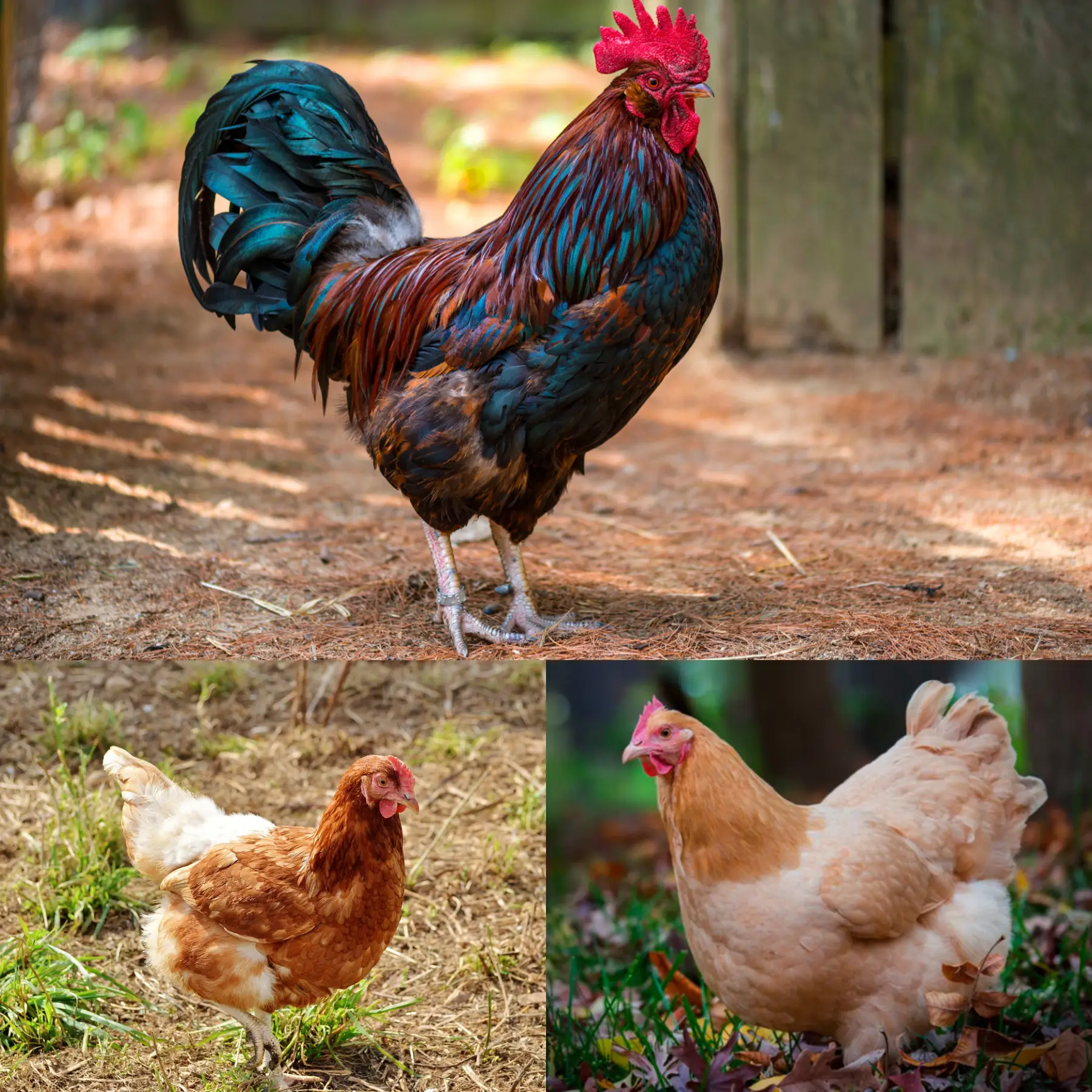
Quick Tips: Hen or Rooster?
Subscribe To Our Newsletter
Get notifications only about new products and updates.
Related Posts

Integrating New Chicks into Your Established Flock
Integrating new chicks to an established flock of chickens can be a delicate process. For many poultry keepers, the integration is crucial to maintaining peace

Quick Tips: Addressing Egg Laying Concerns
Not Getting Eggs from Your Hens? Here’s What You Need to Know! Are your hens taking their sweet time before they start laying eggs, or

Tips for Chick Season
Hey there, chicken enthusiasts! Are you ready for the upcoming chick season at Valley Hatchery? Let us share some tips to make sure your season

Quick Tips: Hen or Rooster?
Image Source: Grubbly Farms If you’ve found your way here, you’re likely in that common situation of scratching your head and wondering, “Is my chicken


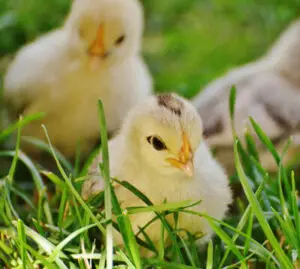
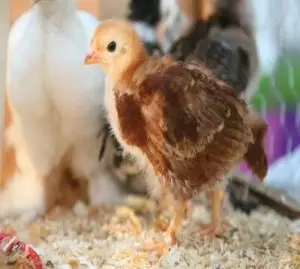


4 thoughts on “Quick Tips: Hen or Rooster?”
should I order 1 rooster with 5 hens?
If you only plan on having 5 hens, ordering 1 rooster is sufficient for fertilization or protection, with a general guideline being 1 rooster for up to 8-10 hens, although this ratio can vary slightly by breed.
I just wanted to THANK YOU for sending such wonderful and healthy chicks plus an extra chick! The chicks arrived, all alive and warm in 2 days. Thank you also for putting a green spot on the roosters chest so I would know which one he was and also for letting me know the ones with feathers on their feet are the black copper marans. You guys are terrific and I will tell my friends and family of Valley Hatchery! THANK YOU SO MUCH!!!
Thank you for your kind words! We’re so glad to hear that your chicks arrived healthy and that you’re happy with your order. Your support means everything to us, and we look forward to serving you again in the future.